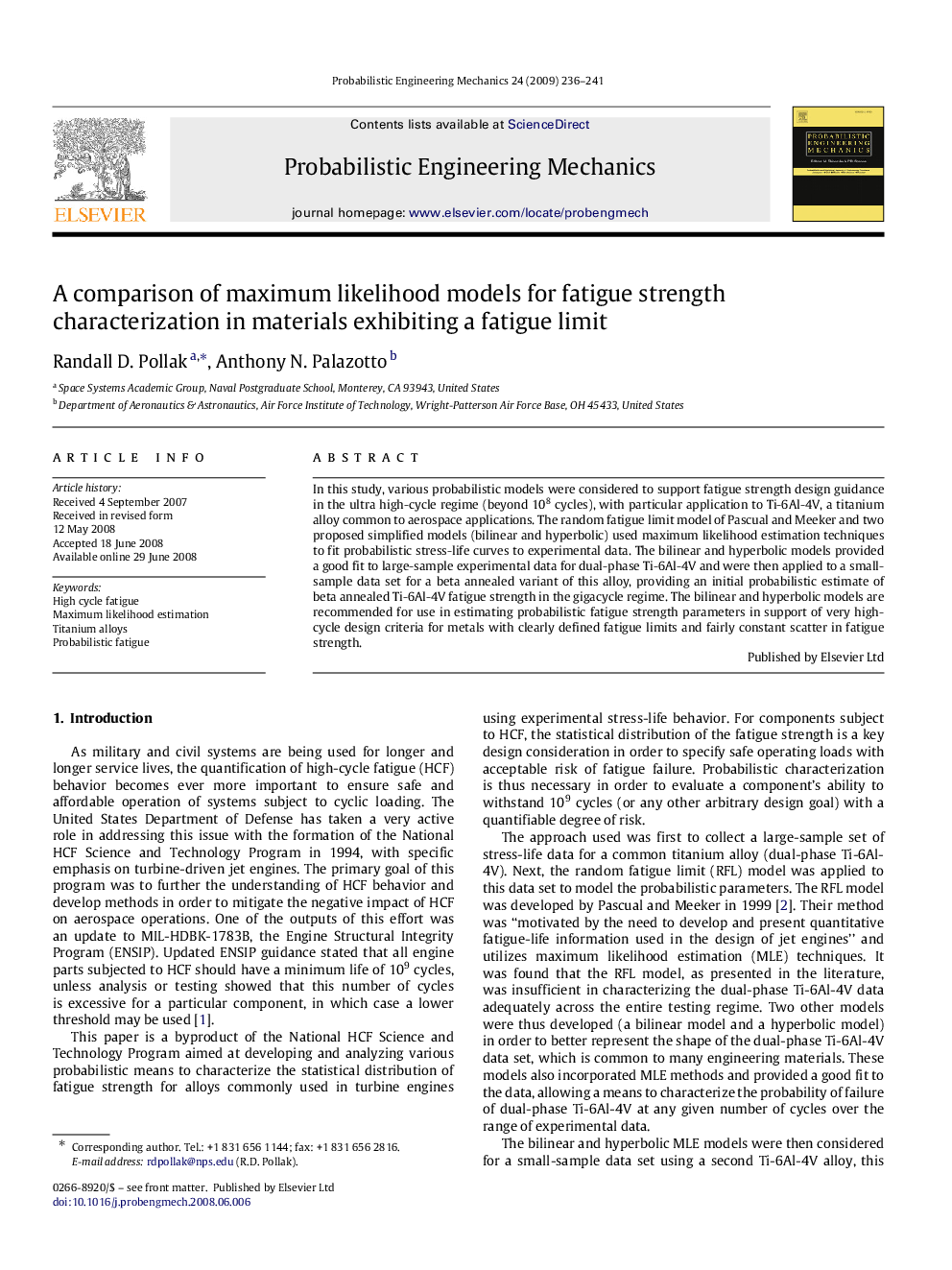| Article ID | Journal | Published Year | Pages | File Type |
|---|---|---|---|---|
| 807278 | Probabilistic Engineering Mechanics | 2009 | 6 Pages |
In this study, various probabilistic models were considered to support fatigue strength design guidance in the ultra high-cycle regime (beyond 108 cycles), with particular application to Ti-6Al-4V, a titanium alloy common to aerospace applications. The random fatigue limit model of Pascual and Meeker and two proposed simplified models (bilinear and hyperbolic) used maximum likelihood estimation techniques to fit probabilistic stress-life curves to experimental data. The bilinear and hyperbolic models provided a good fit to large-sample experimental data for dual-phase Ti-6Al-4V and were then applied to a small-sample data set for a beta annealed variant of this alloy, providing an initial probabilistic estimate of beta annealed Ti-6Al-4V fatigue strength in the gigacycle regime. The bilinear and hyperbolic models are recommended for use in estimating probabilistic fatigue strength parameters in support of very high-cycle design criteria for metals with clearly defined fatigue limits and fairly constant scatter in fatigue strength.
